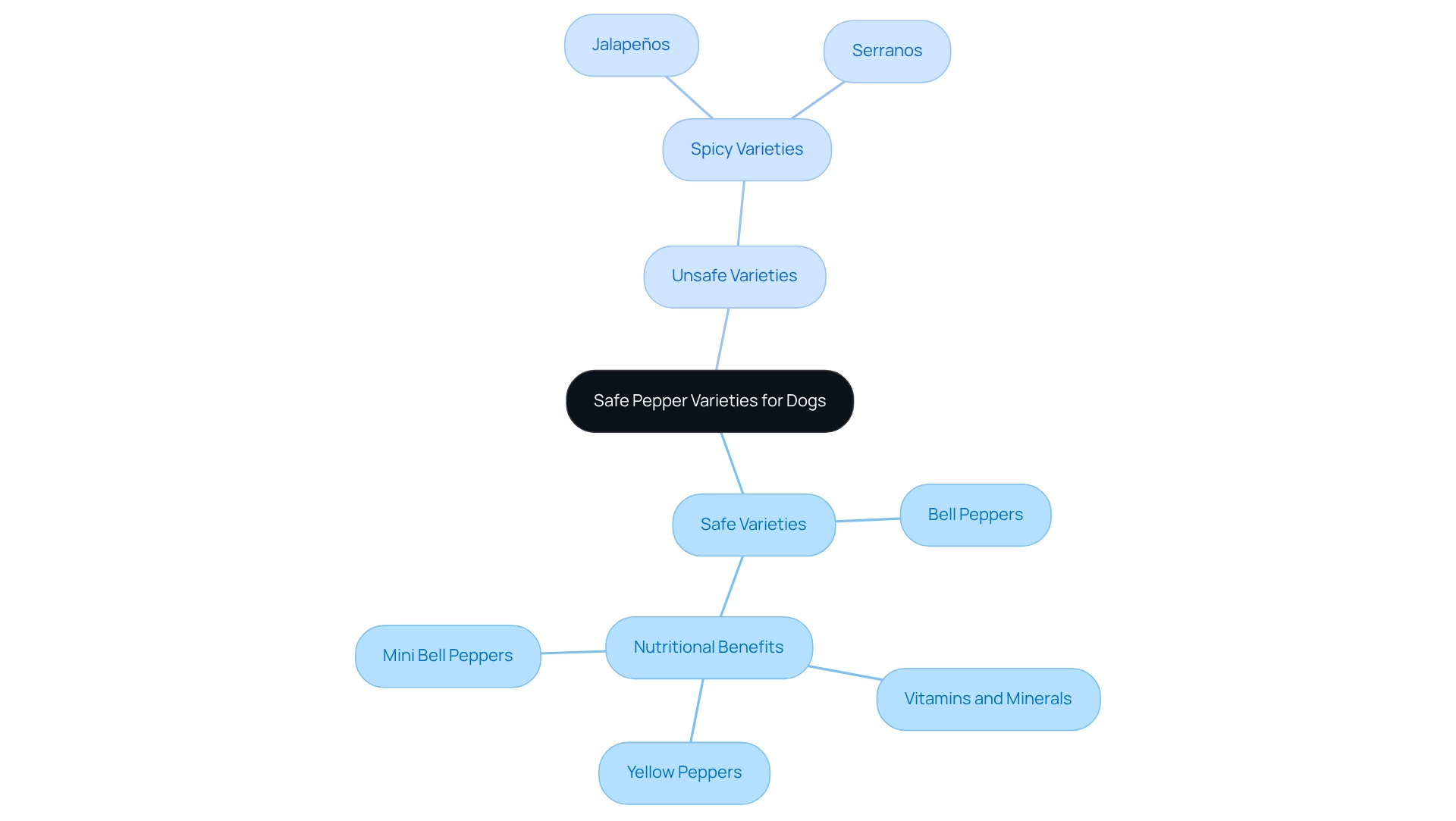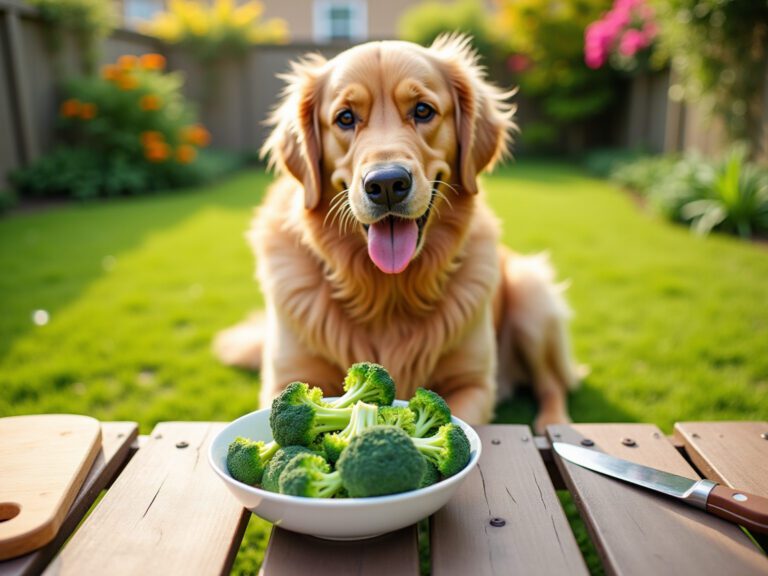Can Dogs Eat Peppers? Safe Preparation and Monitoring Tips
Overview
As a loving pet owner, you may wonder about the safety of adding new foods to your furry family member’s diet. The good news is that dogs can safely enjoy bell peppers, especially the sweet varieties like red, yellow, and green. These colorful veggies are packed with essential vitamins and antioxidants that can truly benefit your dog’s health.
When considering introducing bell peppers, it’s important to prepare them properly and introduce them gradually. This ensures that your pet has a positive experience with this nutritious addition. Always keep an eye out for any adverse reactions, as monitoring your dog’s response is key to their well-being.
At Adventure Den, we understand the importance of nurturing your pet’s health, and we’re here to support you in making informed choices. By incorporating bell peppers into your dog’s diet, you’re not just providing a tasty treat; you’re also enhancing their overall health and happiness. So, why not give it a try? Your furry family member will thank you for it!
Introduction
Incorporating nutritious foods into your furry family members’ diet can significantly enhance their overall health and vitality. Among these, peppers—particularly bell peppers—stand out as a colorful and beneficial addition. Rich in essential vitamins and antioxidants, these vegetables not only support immune function and promote skin health but also serve as a low-calorie, crunchy snack that many dogs find delightful.
However, ensuring that the right varieties are chosen and prepared safely is paramount for pet owners looking to introduce this vibrant vegetable into their pets’ meals. As you embark on the journey of integrating peppers into their diet, understanding how to monitor reactions and provide safe consumption methods will be crucial for maintaining a happy and healthy canine companion.
Understand the Nutritional Benefits of Peppers for Dogs
Capsicum, especially sweet capsicum, serves as a wonderful source of essential vitamins and minerals that can greatly enhance your furry family member’s well-being. Rich in vitamins A, C, and E, these nutrients play vital roles in supporting immune function, promoting skin health, and improving vision. Additionally, these vitamins contribute to overall vitality, raising the question of whether can dogs eat peppers, making capsicum a valuable addition to your dog’s diet. Moreover, bell peppers are loaded with antioxidants that help neutralize free radicals in the body, potentially reducing the risk of chronic illnesses.
Interestingly, mini bell peppers also offer significant nutritional benefits, making them another fantastic option for your pet. Their high fiber content aids digestion, making them an excellent low-calorie snack choice for canines. Research indicates that incorporating bell peppers into your pet’s meals can enhance their overall health and raises the question of can dogs eat peppers, providing a crisp treat that many dogs enjoy. However, it’s important to introduce these vegetables gradually and monitor for any adverse reactions, especially in dogs with specific pollen allergies, as overeating can lead to gastrointestinal upset. To maximize benefits, it’s recommended that peppers do not exceed 10% of your dog’s total food intake.
As Sarah Hibbert notes, ‘Having collaborated with other experts in the holistic canine wellness sphere, Alison is a breath of fresh air,’ underscoring the importance of quality ingredients in your dog’s diet. Fresh vegetables are the best choice for dogs, as they are packed with nutrients; any moldy or rotten produce should be discarded. By incorporating this nutritious vegetable into their meals, you can help promote your dog’s well-being in a delightful way.
Identify Safe Pepper Varieties for Your Dog
When selecting vegetables for your furry family members, it’s essential to consider if dogs can eat peppers among the best options available. A common question is, can dogs eat peppers, given that bell peppers—offered in vibrant colors like red, yellow, green, and orange—are safe and nutritious choices. These non-toxic vegetables, including whether dogs can eat peppers, can be enjoyed either raw or cooked, making them a versatile and delightful snack. Yellow vegetables, in particular, shine for their nutritional benefits, providing vital vitamins and minerals that contribute to your dog’s overall health.
However, it’s crucial to steer clear of spicy varieties such as jalapeños, serranos, and other hot types, as these can cause gastrointestinal distress and discomfort for your beloved pet. Always ensure that the vegetables you choose are fresh and free from mold or spoilage before offering them to your furry friend. By selecting the right varieties, you can provide a nutritious snack that enhances your dog’s diet, especially when considering if dogs can eat peppers.
Additionally, when introducing any new food, including vegetables, it’s important to monitor your dog’s reactions. This way, you can ensure they enjoy the treat without any adverse effects. Remember, your dog’s happiness and health are what matter most!

Prepare Peppers for Safe Consumption
To ensure your furry family members enjoy their vegetables safely, start by thoroughly washing them to remove any pesticides or dirt. The best way to clean vegetables for your pets is by using clean, flowing water and gently scrubbing the surface. Remember to cut off the top and bottom of the vegetable, then slice it open to remove any seeds and white membranes that may be difficult for dogs to digest. It’s important to slice the vegetables into small, manageable pieces to minimize the risk of choking.
You can offer these crunchy snacks raw or lightly steam them to soften their texture, making it easier for your dog to chew. However, it’s crucial to avoid adding oils, salt, or seasonings, as these can be harmful to dogs. Always monitor your dog’s reaction to new foods, including vegetables, and consider the question of can dogs eat peppers; look out for any signs of irritability or digestive issues after introducing them. As Victoria Lynn Arnold wisely suggests, if your dog eats a significant quantity of peppers, please reach out to your veterinarian promptly. This careful approach ensures that your pet enjoys a healthy and safe treat, reinforcing the nurturing environment you strive to provide.
Monitor Your Dog’s Reaction to Peppers
After incorporating vegetables into your dog’s meals, it’s vital to observe your furry family member closely for any signs of discomfort or allergic reactions, especially when considering if can dogs eat peppers. Common symptoms to watch for include:
- Vomiting
- Diarrhea
- Excessive drooling
- Changes in behavior
If your beloved pet exhibits any negative reactions, please stop giving them those vegetables immediately and consult your veterinarian for guidance. To minimize risks, start with a small quantity of spice to assess your dog’s tolerance before making it a regular part of their diet. Remember, each dog is unique, and their responses to new foods can vary significantly.
As Dr. Beth kindly advises, “I hope your sweetie feels better soon!” This sentiment underscores the importance of careful observation to ensure your pet’s health and well-being. It’s also worth noting that large dogs can safely have up to 3 teaspoons of psyllium fiber 1-2 times daily, which provides a comparative context for how much of a new food, like peppers, can dogs eat safely. Furthermore, when considering nutritional changes, consulting with a veterinary nutrition expert is crucial, especially if you’re exploring home-prepared meals. This ensures that their diet remains comprehensive and well-rounded.
In case of adverse reactions, knowing how to clean dog diarrhea effectively can also be beneficial. A well-rounded diet is essential for your dog’s overall health, as highlighted in case studies on managing canine arthritis. This reinforces the need for careful monitoring when introducing new foods, ensuring that your furry friend thrives in a nurturing environment.
Conclusion
Incorporating bell peppers into your furry family member’s diet can significantly enhance their health, thanks to the rich array of essential vitamins and antioxidants they provide. These nutritious vegetables support immune function, promote skin health, and offer a low-calorie snack that many dogs enjoy. However, it is vital to introduce peppers gradually and monitor for any adverse reactions, particularly in dogs with specific allergies.
Selecting the right varieties is crucial for your pet’s safety. Bell peppers in various colors—red, yellow, green, and orange—are nutritious options, while spicy peppers should be avoided due to the potential for gastrointestinal distress. Proper preparation is equally important; washing, removing seeds, and cutting the peppers into manageable pieces can help ensure safe consumption.
Ongoing observation after introducing peppers is essential to catch any signs of discomfort early. Each dog’s reaction to new foods can vary, so starting with small amounts allows for a better assessment of tolerance. Consulting with a veterinarian or a veterinary nutritionist can provide additional guidance on incorporating new foods into your dog’s diet effectively.
By understanding the nutritional benefits, selecting safe varieties, preparing them correctly, and monitoring reactions, pet owners can confidently add peppers to their dog’s meals. This colorful vegetable not only enhances health but also adds a delightful crunch to their diet, supporting a happy and vibrant canine companion.
Frequently Asked Questions
What are the nutritional benefits of capsicum for dogs?
Capsicum, especially sweet capsicum, is rich in vitamins A, C, and E, which support immune function, promote skin health, and improve vision. It also contains antioxidants that help neutralize free radicals, potentially reducing the risk of chronic illnesses.
Can dogs eat mini bell peppers?
Yes, mini bell peppers also offer significant nutritional benefits, including high fiber content that aids digestion, making them an excellent low-calorie snack choice for dogs.
How should bell peppers be introduced into a dog’s diet?
Bell peppers should be introduced gradually into a dog’s diet while monitoring for any adverse reactions, especially in dogs with specific pollen allergies.
What is the recommended amount of peppers in a dog’s diet?
It is recommended that peppers do not exceed 10% of your dog’s total food intake to maximize their benefits and avoid gastrointestinal upset.
What should be considered when choosing peppers for dogs?
Fresh vegetables are the best choice for dogs, as they are packed with nutrients. Any moldy or rotten produce should be discarded to ensure your dog’s health.
How can incorporating peppers into a dog’s meals promote well-being?
Incorporating nutritious vegetables like peppers into a dog’s meals can help enhance their overall health and provide a delightful treat that many dogs enjoy.







